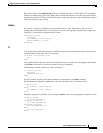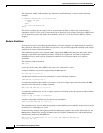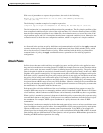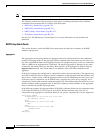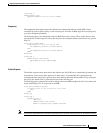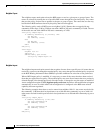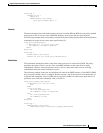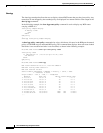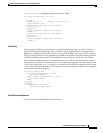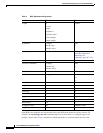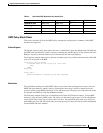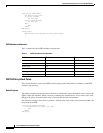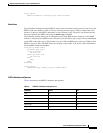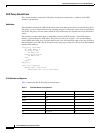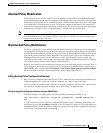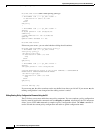
Implementing Routing Policy on Cisco IOS XR Software
Information About Implementing Routing Policy
RC-229
Cisco IOS XR Routing Configuration Guide
RP/0/RP0/CPU0:router# show bgp policy route-policy test2
10.0.0.0/8 is advertised to 10.0.101.2
Path info:
neighbor:10.0.1.2 neighbor router id:10.0.1.2
valid external best
Attributes after inbound policy was applied:
next hop:10.0.1.2
MET ORG AS
origin:incomplete neighbor as:3 metric:10
aspath:3
Attributes after outbound policy was applied:
next hop:10.0.1.2
MET ORG AS
origin:incomplete neighbor as:3 metric:333
aspath:2 3
...
Table Policy
The table policy attach point allows the user to configure traffic-index values on routes as they are
installed into the global routing table. This attach point supports the BGP policy accounting feature.
BGP policy accounting uses the traffic indexes that are set on the BGP routes to track various counters.
This way, router operators can select different sets of BGP route attributes using the matching operations
and then set different traffic indexes for each different class of route they are interested in tracking.
The following example shows how to set the traffic index to 10 in IPv4 unicast routes that originated
from autonomous system 10. Likewise, any IPv4 unicast routes that originated from autonomous system
11 have their traffic index set to 11 when they are installed into the FIB. These traffic indexes are then
used to count traffic being forwarded on these routes in line cards by enabling the BGP policy accounting
counters on the interfaces of interest.
route-policy sample-table
if as-path originates-from ‘10’ then
set traffic-index 10
elseif as-path originates-from ‘11’ then
set traffic-index 11
endif
end-policy
router bgp 2
address-family ipv4 unicast
table-policy sample-table
.
.
.
BGP Attributes and Operators
Table 3 summarizes the BGP attributes and operators.



